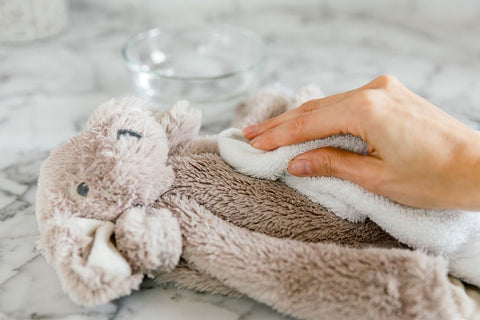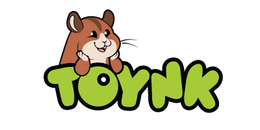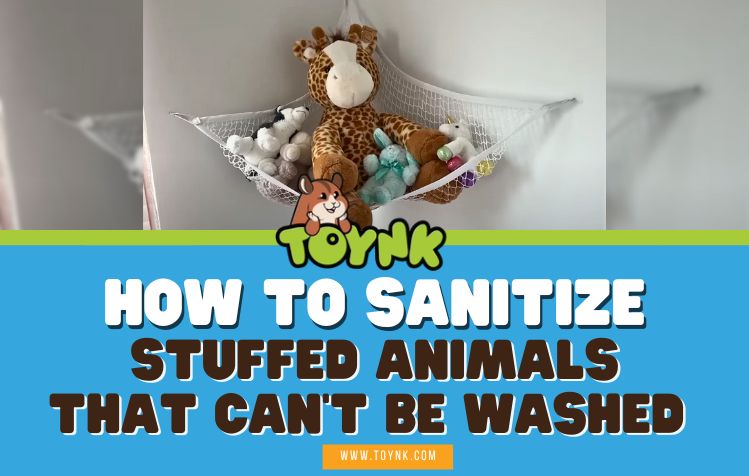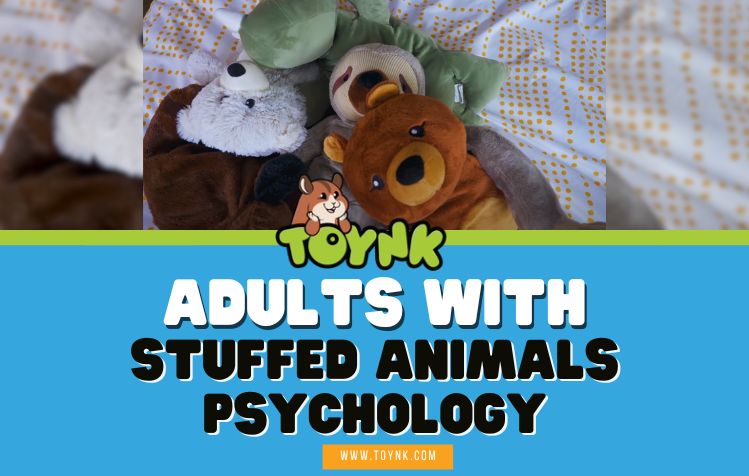Stuffed animals provide irreplaceable comfort to children and adults, but keeping them clean can be challenging. Many stuffed toys contain electronics, delicate materials, or embellishments that make traditional washing impossible.
Our expert team has researched, tested, and compiled various methods to sanitize stuffed animals that can't be washed while preserving their quality and extending their lifespan.
Shop The Plush Toys Collection Now
5 Steps to Sanitize Stuffed Animals Without Washing
1. Vacuuming Method

Start by using a vacuum cleaner with an upholstery attachment to remove dust, allergens, and surface debris. Cover the attachment with a thin cloth or pantyhose to prevent damaging the toy's delicate fibers.
Pay special attention to seams and crevices where dirt often accumulates. This preliminary step is essential before applying any cleaning solution. [1]
2. Spot Cleaning Technique
Use a clean white cloth, dampened with warm water, for visible stains or soiled areas. For stubborn spots:
- Mix one teaspoon of mild detergent with one cup of cold water
- Gently dab (don't rub) the stained area
- Use a separate cloth, dampened with clean water, to remove soap residue
- Let it air dry completely before handling
3. Steam Sanitization

Steam cleaning is an effective method that kills 99.9% of bacteria and dust mites without harsh chemicals:
- Hold the steamer 1-2 inches away from the plush toy
- Steam in short bursts of 5-10 seconds per section
- Avoid oversaturating the fabric
- Allow proper ventilation for drying
- Keep the temperature setting moderate to protect adhesives and delicate parts
4. Baking Soda Deodorizing Treatment

For odor elimination and gentle cleansing:
- Prepare the cleaning bag: Pour ½ cup of baking soda into a large plastic bag (use more for larger stuffed animals)
- Insert the stuffed animal: Place the toy inside the bag with sufficient space for movement
- Shake gently: Seal the bag, leaving some air inside, and gently shake for 2 minutes to coat the toy with baking soda
- Rest period: Let the toy sit in the sealed bag for 15-20 minutes to absorb the smell
- Remove residue: Use a soft brush or vacuum cleaner with upholstery attachment to thoroughly remove all baking soda
5. Freezing Method
The freezing technique is particularly effective for eliminating dust mites and certain bacteria:
- Place the stuffed animal in a sealed plastic bag, removing as much air as possible
- Put the bagged toy in the freezer for 24-48 hours
- After freezing, remove and let it return to room temperature
- Vacuum thoroughly to remove dead dust mites and debris
Shop The Plush Toys Collection Now
Related Posts:
- Steps To Wash Stuffed Animals
- Steps To Make Stuffed Animals Soft Again
- Steps To Wrap Stuffed Animals
5 Steps To Sanitize Stuffed Animals Using Baking Soda
1. Pour Baking Soda Into Garbage Bag
Get ½ cup of baking soda from your cupboard or local grocery store, but if the stuffed animal is too big, you can always add a few more. Pour the baking soda into a plastic garbage bag.
2. Put Them In The Bag
Next, put the stuffed toy in the garbage bag and let the object rest at the bottom. Try to squeeze excess air from the bag but make sure to leave a small space for the toy.
3. Shake The Bag

Twist, tie, and hold the top of the plastic bag tight as you are about to shake it. Remember that the stuffed animal is inside, so it is essential to do this process very gently. Make sure the baking soda will cover the toy all over.
4. Let It Sit for 15 Minutes
After shaking for 2 minutes, put the bag down for 15 minutes. This will help deodorize the toy and remove any dirt, grime, and foul smell from the fabric.
5. Shake Off the Excess Baking Soda

Remove the residual baking soda by using a vacuum cleaner hose. Using a soft-bristled brush when removing the remaining baking soda from the stuffed animals is recommended to prevent ruining the fabric.
Afterward, put the bag in the trash can and keep it away from kids to avoid accidental inhalation.
Special Considerations for Delicate or Vintage Stuffed Animals
For antique or particularly delicate plush toys:
- Test any cleaning method on a small, hidden area first
- Use gentler methods like freezing or light vacuuming for very old or valuable items
- Consider using UV-C light devices for electronics-containing toys
- Always allow complete drying between cleaning steps to prevent mold growth
- Check the care label, if available, before attempting any cleaning method
Maintenance Schedule for Keeping Stuffed Animals Clean
For optimal cleanliness and longevity:
- Vacuum many stuffed animals monthly to remove surface dust and allergens
- Spot clean as needed when spills, stains, or spots occur
- Perform deep clean and sanitize (steam or baking soda method) quarterly
- Sanitize immediately after exposure to illness
- Store in clean, dry containers when not in use
- Follow the instructions on the label when available
When to Consider Using a Washing Machine
While this article focuses on toys that can't be washed, some stuffed animals may be safely machine-washed [2]:
- Always check the manufacturer's instructions or care label first
- Use a gentle or delicate cycle with cold water and mild laundry detergent
- Place the toy in a pillowcase or laundry bag for protection
- Do not use fabric softener, as it may cause discoloration
- Allow to tumble dry on low heat or air dry to fluff and restore shape
FAQs
How do you disinfect an old stuffed animal?
To launder stuffed animals, especially those that are old or contain a music box inside, you can use a vacuum, steam, air dry, or dip them in baking soda.
This procedure is effective, especially for toys you cannot hand wash with laundry detergent or submerge in a washing machine.
What can I spray on stuffed animals to disinfect?
You can spray a child-friendly disinfectant on the stuffed animal to eliminate germs, insects, and viruses, especially if you cannot clean it using a washing machine.
Just make sure to let the toy sit for a while after spraying it with disinfectant before letting your kid play with it.
Final Thoughts
Maintaining clean stuffed animals is essential for good hygiene and preserving these cherished companions. Consider the cleaning method most appropriate for your specific toy, considering its materials, age, and delicacy. Gentler methods like vacuuming and freezing are safest for special or vintage stuffed animals.
If you're looking for new, high-quality stuffed animals that bring joy to children and collectors alike, explore Toynk's extensive collection of licensed and premium plush toys. Learn how to clean and properly maintain your stuffed toys to prevent allergy and asthma triggers while extending their lifespan.
If you are looking for adorable (and affordable) stuffed animals for you or your kid, make sure to visit Toynk!
Shop The Plush Toys Collection Now
References:
- https://www.nytimes.com/2020/04/17/parenting/clean-stuffed-animals.html
- https://homeguides.sfgate.com/clean-soft-toys-cant-thrown-washing-machine-20658.html



